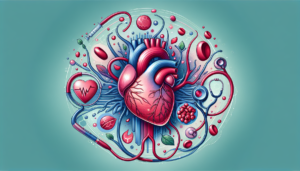Understanding the Stages of Sleep for Enhancing Quality
Understanding the Stages of Sleep for Enhancing Quality
Sleep is a vital component of our overall health and well-being, significantly affecting our physical, mental, and emotional states. To appreciate the intricacies of sleep, it’s essential to analyze the various stages that contribute to its overall quality. This article delves into the stages of sleep, their importance, and how understanding them can lead to improved sleep quality.
What Are the Stages of Sleep?
Sleep is broadly divided into two types: Non-Rapid Eye Movement (NREM) sleep and Rapid Eye Movement (REM) sleep. NREM sleep consists of three stages, leading up to REM sleep. Each of these stages plays a crucial role in physical restoration, emotional regulation, and cognitive functioning.
NREM Sleep
-
Stage 1 (Light Sleep)
Stage 1 is the transition phase from wakefulness to sleep, typically lasting between 5 to 10 minutes. During this stage, a person may experience jerk-like movements or a sensation of falling. Key characteristics of stage 1 sleep include:- Decreased muscle activity.
- Slower brain waves (theta waves).
- Gradual reduction in heart rate and breathing.
-
Stage 2 (Moderate Sleep)
This stage marks deeper relaxation, lasting about 20 minutes per cycle and accounting for approximately 50% of total sleep. Stage 2 is essential for memory consolidation and cognitive functioning. Characteristics include:- Sleep spindles and K-complexes, which help protect the brain from external stimuli.
- Further reduction in body temperature and heart rate.
- Increased resistance to external disturbances.
- Stage 3 (Deep Sleep)
Also known as slow-wave or delta sleep, Stage 3 is crucial for physical recovery and growth. Lasting between 20 to 40 minutes, it’s the most restorative stage. Characteristics include:- Dominance of delta waves in brain activity.
- Minimal muscle activity.
- Reduced responsiveness to external stimuli.
REM Sleep
REM sleep occurs approximately 90 minutes after falling asleep and recurs multiple times throughout the night. It typically lasts for 10 to 20 minutes per cycle, increasing with successive sleep cycles. This stage is primarily associated with dreaming and cognitive processing. Key characteristics include:
- Rapid eye movement.
- Increased brain activity akin to wakefulness.
- Irregular heart rate and breathing.
The Sleep Cycle
A typical sleep cycle lasts about 90 to 110 minutes, progressing through the stages of NREM and REM sleep. Most adults experience four to six cycles each night. The transitions between stages play a critical role in ensuring restorative sleep.
- Cycle Intervals: Each sleep cycle consists of light, deep, and REM stages, demonstrating a pattern where deep sleep predominates in the first half of the night and REM sleep becomes more prevalent in the latter half.
- Sleep Architecture: Sleep architecture is the structure of sleep cycles. Healthy architecture indicates balanced periods of NREM and REM sleep, contributing to overall sleep quality.
Importance of Each Sleep Stage
-
NREM Sleep Benefits
- Physical Restoration: Stage 3 sleep supports physical recovery by promoting cellular repair, muscle growth, and immune function. Growth hormone is primarily secreted during this stage, aiding in tissue development and recovery.
- Memory Consolidation: Stages 1 and 2 play significant roles in processing memories and learning. During Stage 2, specific neural connections strengthen, linking new experiences to existing knowledge.
- REM Sleep Benefits
- Cognitive Function: REM sleep is vital for emotional processing and problem-solving skills. It fosters creativity and adaptability by allowing the brain to make novel associations.
- Emotional Regulation: REM sleep is essential for maintaining mood balance. Studies show that individuals deprived of REM sleep exhibit increased anxiety and emotional instability.
Factors Affecting Sleep Quality
-
Sleep Environment
- Light: Exposure to light, particularly blue light from screens, can significantly interfere with melatonin production, delaying the onset of sleep and disrupting the natural sleep cycle. Aim for a darkened bedroom using blackout curtains and minimizing screen time before bed.
- Noise: Even minor disturbances can disrupt sleep cycles. Consider white noise machines or earplugs to create a tranquil sleeping environment.
-
Lifestyle Choices
- Diet: Caffeine and heavy meals close to bedtime can impair relaxation, making it difficult to move through the sleep stages efficiently. Alcohol may initially promote drowsiness but disrupts REM sleep and leads to fragmented sleep.
- Exercise: Regular physical activity promotes deeper sleep but should ideally be completed several hours before bedtime to avoid overstimulation.
- Stress and Anxiety
- High stress levels can lead to hyperarousal, making it challenging to transition into the deeper stages of sleep. Techniques such as mindfulness, meditation, or yoga can help calm the mind and prepare the body for sleep.
Techniques to Enhance Sleep Quality
-
Establish a Sleep Schedule
- Maintain a consistent bedtime and wake time, even on weekends. This routine helps regulate the body’s internal clock, facilitating smoother transitions through sleep stages.
-
Optimize the Sleep Environment
- Ensure a comfortable mattress and pillows that support your sleep position. A cool room temperature (around 60-67°F) is often recommended for optimal sleep.
-
Limit Stimulants and Distractions
- Avoid caffeine, nicotine, and electronics in the hours leading up to bedtime. Instead, engage in relaxing activities like reading or taking a warm bath to unwind.
- Mindfulness and Relaxation Techniques
- Incorporating mindfulness practices, such as deep breathing exercises or progressive muscle relaxation, can help reduce pre-sleep anxiety and ease the transition into sleep.
Understanding Sleep Disorders
Sleep disorders can disrupt normal sleep architecture, leading to decreased sleep quality and overall health consequences. Common disorders include:
-
Insomnia
- Characterized by difficulty falling or staying asleep, insomnia can prevent individuals from achieving the restorative sleep they need. Cognitive-behavioral therapy for insomnia (CBT-I) is recommended as an effective treatment.
-
Sleep Apnea
- Sleep apnea involves repeated interruptions in breathing during sleep, leading to fragmented sleep and excessive daytime sleepiness. Treatment may involve lifestyle changes, continuous positive airway pressure (CPAP) machines, or dental appliances.
-
Restless Legs Syndrome (RLS)
- RLS involves an irresistible urge to move the legs, often accompanied by uncomfortable sensations. Addressing underlying conditions, lifestyle changes, and certain medications can help manage symptoms.
- Narcolepsy
- Narcolepsy is a neurological disorder characterized by excessive daytime sleepiness and sudden sleep attacks. Management often includes medications and lifestyle adjustments.
Tracking Sleep Quality
Utilizing sleep trackers or apps can provide insights into sleep patterns, fostering a better understanding of your sleep architecture. By analyzing trends in sleep data, individuals can make informed decisions about their sleep habits, ultimately leading to improved quality.
Final Thoughts on Sleep Stages
Understanding the stages of sleep is paramount for enhancing sleep quality and overall well-being. By recognizing the significance of each stage, identifying factors that influence sleep, and implementing strategies for improvement, you can optimize your nightly rest. Each night spent in a deep sleep cycle is a step toward better physical health, improved mental clarity, and emotional resilience, emphasizing the importance of prioritizing quality sleep in our daily lives.








